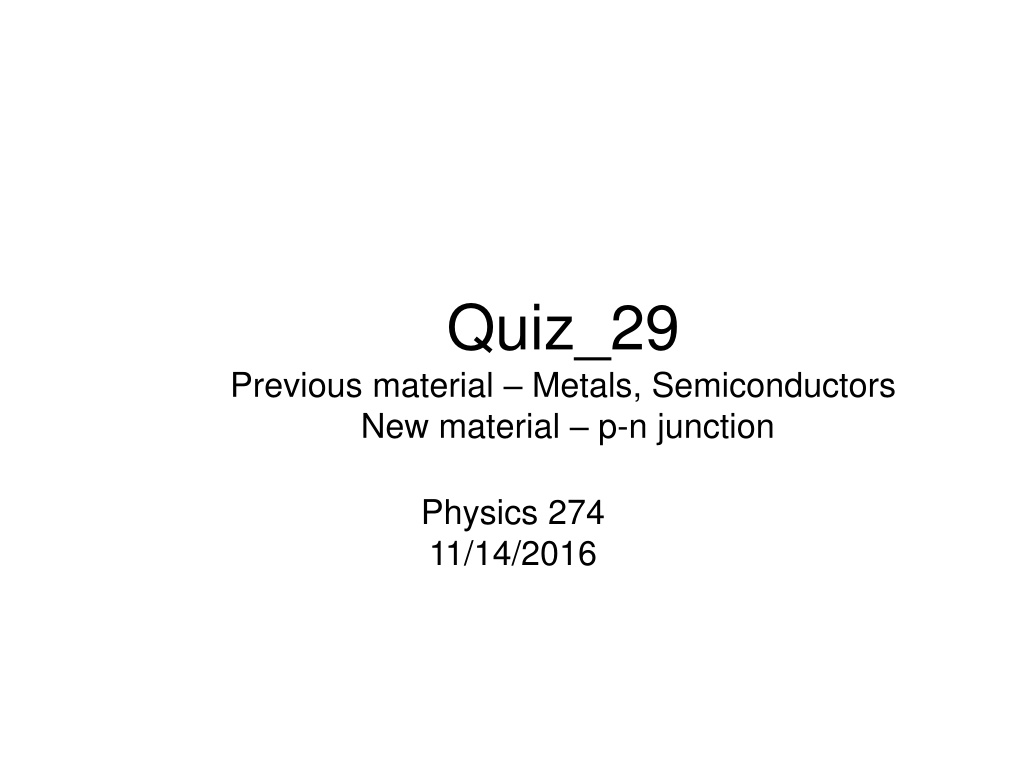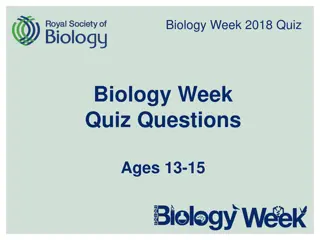
Understanding Semiconductors and PN Junctions in Physics
Explore the electronic structure of silicon, electron behavior with temperature change, and the types of semiconductors through a series of quiz questions and images in the field of physics from a material science perspective.
Download Presentation

Please find below an Image/Link to download the presentation.
The content on the website is provided AS IS for your information and personal use only. It may not be sold, licensed, or shared on other websites without obtaining consent from the author. If you encounter any issues during the download, it is possible that the publisher has removed the file from their server.
You are allowed to download the files provided on this website for personal or commercial use, subject to the condition that they are used lawfully. All files are the property of their respective owners.
The content on the website is provided AS IS for your information and personal use only. It may not be sold, licensed, or shared on other websites without obtaining consent from the author.
E N D
Presentation Transcript
Quiz_29 Previous material Metals, Semiconductors New material p-n junction Physics 274 11/14/2016
Q.1 The element silicon has Z=14. Its electronic structure is the following. A. 1s22s22p63s23p3 B. 1s22s22p53s23p3 C. 1s22s22p63s23p2 D. 1s22s12p63s23p3 E. 1s22s22p63s23p24s1
Q.2 As the temperature increases, more electrons are A. Found below the Fermi energy B. Excited above the Fermi energy C. Found in the conduction band of metals D. Insulators become superconductors
Q.2 Does this energy band picture depicts a n-type or p-type or an intrinsic semiconductor? A. N-type B. P-type C. Intrinsic D. Extrinsic
Q.4 This picture denotes a Germanium (group IV) semiconductor is doped with a Gallium (group III) impurity. What type of semiconductor is this ? A. N-type B. P-type C. N-P-N type D. P-N-P type





















